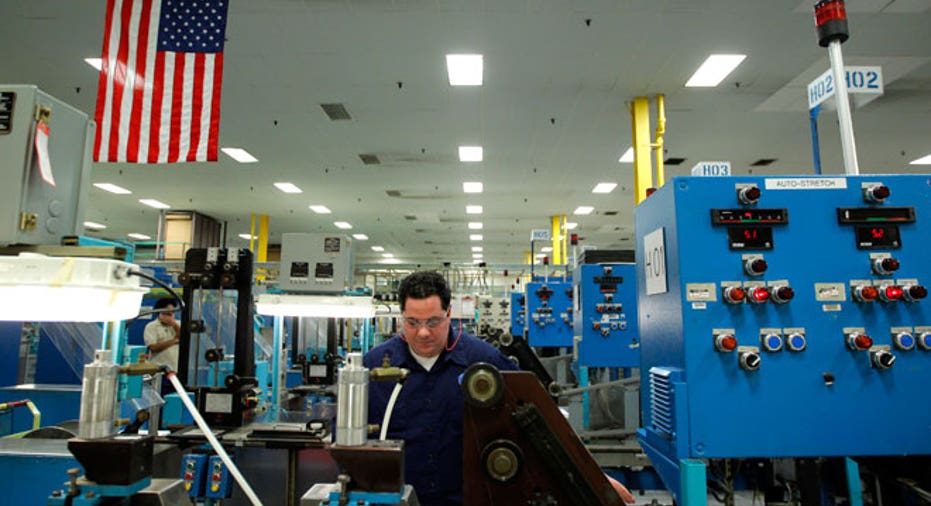Second-Quarter U.S. Economic Growth in Question

Second-quarter GDP projections show the U.S. economy likely didn’t rebound quite as much as expected during the quarter, upending predictions that a first-quarter soft patch would serve as a launching pad for strong economic growth.
“Despite expectations for a strong bounce back from a weather-suppressed first quarter, it now looks like real GDP grew by only about 2.0% in the second quarter,” David Kelly, chief global strategist at JPMorgan Funds said.
The government’s first estimate of second quarter GDP will be released Thursday at 8:30 a.m. ET. GDP represents the total value of goods and services produced in the U.S. during the quarter.
The economy actually contracted slightly in the first quarter, negatively impacted by another severe winter that kept consumers at home, a strong dollar that cut into U.S. exports and a West Coast dock strike that disrupted supply chains.
!function(d,s,id){var js,fjs=d.getElementsByTagName(s)[0],p=/^https:/.test(d.location)?'https':'http';if(!d.getElementById(id)){js=d.createElement(s);js.id=id;js.src=p+"://cdn1.findthebest.com/rx/widgets.js";fjs.parentNode.insertBefore(js,fjs);}}(document,"script","ftb-widgetjs");
Growth was expected to rebound, however, as the snow thawed and the striking dock workers returned to their jobs.
As has been the case through the long economic recovery following the 2009 recession, economic data has been spotty through much of the first half of 2015. Labor markets have been a bright spot, with the unemployment rate falling to its lowest level in seven years – 5.3% in June -- and wages finally showing signs of moving higher after years of stagnation. But the all-important housing sector has yet to hit a sustained period of upward momentum.
Kelly said a handful of mitigating factors could contribute to a potentially disappointing GDP figure, none of which suggests the economy is headed for a prolonged downturn. Indeed, the opposite is likely true. Among those factors are the government’s method for revising earlier GDP figures, whether accumulation of inventories pan out as predicted and a temporary reduction in oil exploration.
‘Data Dependent’ Fed Will Be Watching
“Bearing all of this in mind, growth should pick up a little in the rest of the year to about a 2.5% pace following a slow first half,” said Kelly.
Gregory Daco, head of U.S. Macroeconomics for Oxford Economics, is more optimistic.
“We believe growth accelerated to a healthy 2.6% annualized pace in 2Q after the extremely poor 1Q. Several of the headwinds that stalled growth in the first three months of the year, including poor weather, port disruption on the West Coast and residual seasonality, have since abated and the data have pointed to a solid rise in economic activity," he said.
Regardless of the forecasts, the Federal Reserve will be watching closely when the number is released on Thursday. Central bank policy makers, who are meeting this week but likely won’t be announcing an interest rate hike, have described themselves for months as “data dependent” in terms of the long-awaited decision to raise rates.
The Fed hopes to raise interest rates in tandem with economic growth in an effort to ward off potential runaway inflation caused by the combustible mixture of years of accommodative monetary policy and an overheated economy.
But not everyone believes the economy is poised for robust growth.
In May economists at the Federal Reserve Bank of Atlanta released their forecast for second-quarter economic growth – and it was very different from that of their colleagues in Washington, D.C.
Using a sophisticated forecast model called GDPNow, the Atlanta Fed predicted that second-quarter GDP will clock in at 0.9%. That was well below the 3% estimate many economists had been forecasting because the economy was supposed to bounce back from the weak first quarter.
There are always a lot of economic forecasts floating around, but the Atlanta Fed’s second-quarter GDP prediction is worth paying attention to because they nailed their prediction on the initial dismal first-quarter GDP number.
The Atlanta Fed correctly predicted weeks ago that first-quarter GDP would be much worse than the 1% consensus offered by economists. The estimate from the Atlanta Fed was 0.1%, or slightly lower than the actual GDP of 0.2% reported by the Commerce Department.



















